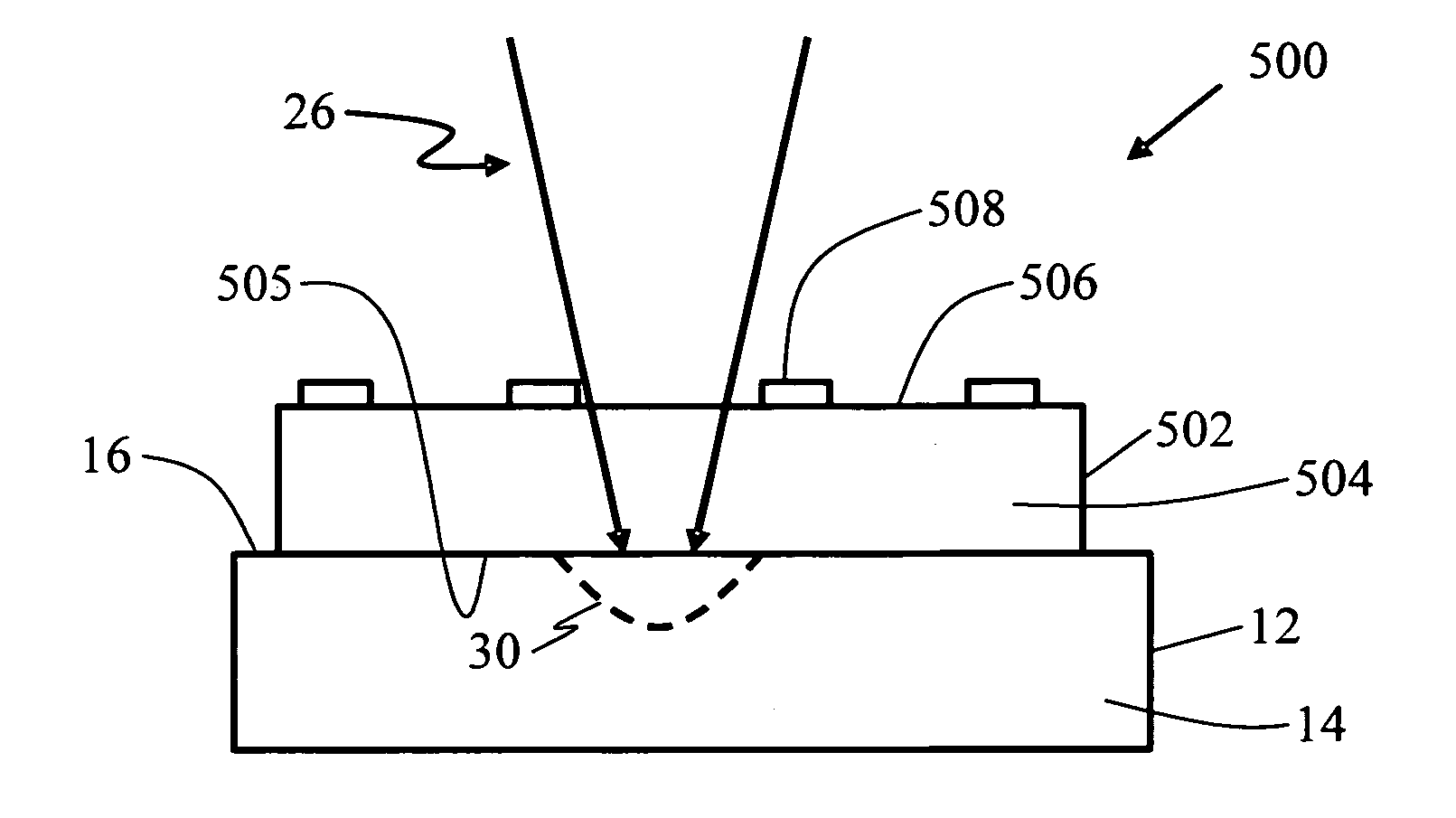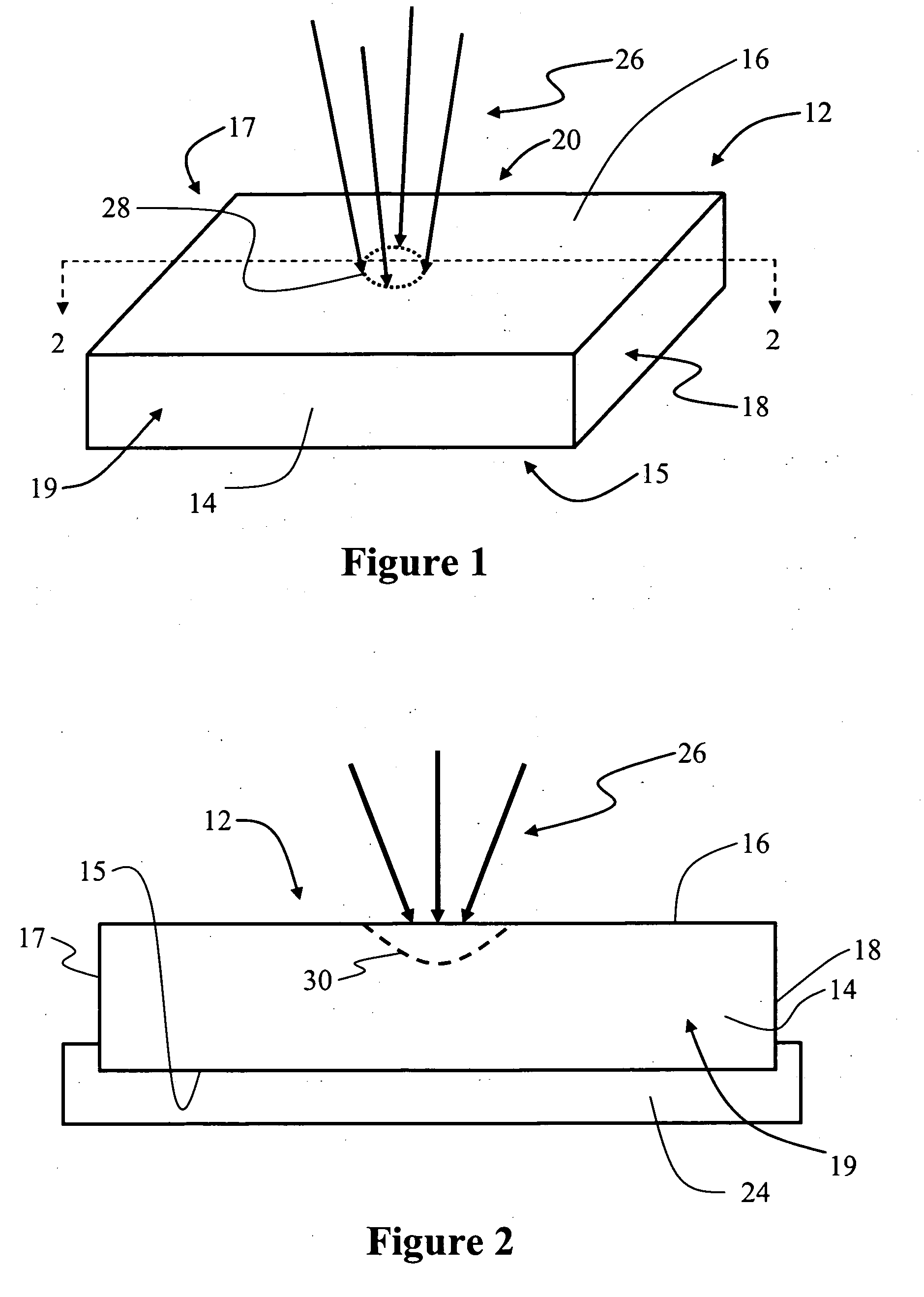Glass-based micropositioning systems and methods
a micropositioning system and glass-based technology, applied in the field of micropositioning, can solve the problems of increasing device cost, wasting real estate, and difficult use of low-loss coupling to high-index planar waveguide arrays
- Summary
- Abstract
- Description
- Claims
- Application Information
AI Technical Summary
Benefits of technology
Problems solved by technology
Method used
Image
Examples
Embodiment Construction
[0054] Reference is now be made in detail to the present preferred embodiments of the invention, examples of which are illustrated in the accompanying drawings. Whenever possible, the same reference numbers and symbols are used throughout the drawings to refer to the same or like parts.
[0055] The present invention includes micropositioning systems and methods that rely on the formation of one or more microbumps in light-absorbing glass substrates. In the description below, various methods of forming microbumps in the light-absorbing substrates are first described. This is followed by a description of example embodiments of methods for micropositioning an optical element via the formation of one or more microbumps in the light-absorbing substrate. An example embodiment of an optical assembly formed using the microbump micropositioning methods of the present invention is then described.
[0056] In the description below, reference is made to PYREX glass, and PYREX is a registered trade...
PUM
| Property | Measurement | Unit |
|---|---|---|
| mode field diameter | aaaaa | aaaaa |
| diameter | aaaaa | aaaaa |
| diameter | aaaaa | aaaaa |
Abstract
Description
Claims
Application Information
 Login to View More
Login to View More - R&D
- Intellectual Property
- Life Sciences
- Materials
- Tech Scout
- Unparalleled Data Quality
- Higher Quality Content
- 60% Fewer Hallucinations
Browse by: Latest US Patents, China's latest patents, Technical Efficacy Thesaurus, Application Domain, Technology Topic, Popular Technical Reports.
© 2025 PatSnap. All rights reserved.Legal|Privacy policy|Modern Slavery Act Transparency Statement|Sitemap|About US| Contact US: help@patsnap.com



